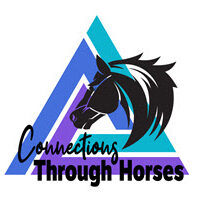We have a new horse in our program. Her name is Yampah and she is a Missouri Foxtrotter and her coloring is buckskin. She is trained pretty good for a typical rider – but what about a rider who needs more assistance? Horses are rarely prepared in regular training for what we do in Therapeutic Riding. First of all, horses are typically lead by lead rope longer than in a typical setting. So Yampah, for example, is very pushy when being lead because she is used to being ridden more. So we will be leading her around, making sure that she moves with us and not ahead of us. When she gets ahead, she will be stopped and backed up then move forward again. We want her to be very responsive to someone who is leading her.
In a therapeutic Riding setting, horses usually have one or even 2 side walkers. So a horse must get used to having people walk alongside. This can be claustrophobic for horses because they do not like to be confined. The better situation is one side walker on the same side as the leader. A horse still needs to get familiar with this set up though. So, we practice having a leader and side walker long before putting a special needs rider on the horse.
Often times, our students are not balanced riders. Some horses are uncomfortable with that and get annoyed. We work with a staff member to try all the possible things a rider may do while riding like: Lean heavily to one side, have poor posture, lean forward or back or generally being squirmy. Of course saddles help immensely with the different pressure that students put on the horse and we choose wisely which saddles to use.
Then finally, we do weird things in Therapeutic Riding. We throw balls, blow bubbles, look in mailboxes, paint horses, use hula hoops and fun noodles. A horse will be introduced to all this craziness and must have a very small reaction to it before they can be used in the program. This is why older horses who have been around the block a few times are best – because nothing really bothers them any more.
So it takes some time, but it is most important to keep our students and our horses safe.
